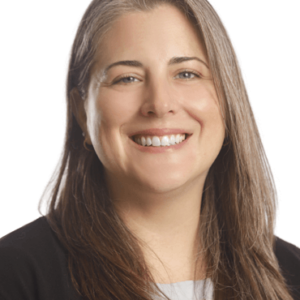There was a sigh of relief across many businesses when the Senate Republican and Democrats reached a deal on Tuesday of this week to provide an additional $310 billion to the CARES Act Paycheck Protection Program (PPP) loan program, increasing the total funding of the program to $659 billion. It is expected that the House will approve the bill and it will be advanced to the President’s desk for signature later this week. For businesses who were not able to get approval yet, they are rushing to get their applications finalized for the second wave of funding which hopefully will be provided by early next week.
However, the businesses that did receive PPP funding have moved on to the next stage of planning on how to maximize debt forgiveness. Unfortunately, they are navigating very muddy waters based on the CARES Act and are left to decipher what the language means and what they need to be doing to track the utilization of their PPP funds.
While businesses are relieved that they received PPP funding, there is growing frustration that their 8-week tracking period surrounding loan forgiveness is ticking and no additional guidance regarding debt forgiveness has been provided by the Small Business Administration (SBA). And to be clear, the time in which the 8-week measurement period for debt forgiveness begins is on the date the lender makes the first disbursement of the PPP loan to the borrower, not the date on which the borrower is notified that they have been approved.
Here are some key items that remain unclear regarding the PPP (as of today) and need additional SBA guidance:
1. What costs are allowed to be included when determining debt forgiveness?
Under the CARES Act, an employer can receive debt forgiveness on a PPP loan for eligible amounts equal to the costs incurred and payments made during the covered period. The literal reading of that statement suggests that not only must the payments be made during the covered period, which is the 8 weeks after the lender made the disbursement to the borrower, but they also must be incurred during that same 8-week period.
Therefore, if a business received a loan on April 20, 2020, they could only calculate debt forgiveness for expenses incurred and paid up to June 15, 2020. Under the literal meaning, if on April 25 the business went to pay an outstanding covered rent obligation that related to March, it technically would not be includible in the debt forgiveness calculation. In addition, to maximize debt forgiveness, 75 percent of the loan proceeds must be spent on payroll costs. There are very few businesses that incur and pay payroll costs on a weekly time period. When asked by our clients if they should start paying their payroll costs weekly in order to meet the definition of paid and incurred, we caution them not just yet.
We are expecting the SBA to provide additional guidance by the end of April, providing clarity about which expenses that are paid during the 8 weeks after receiving the funds can be included for purposes of calculating debt forgiveness. Many are wondering if the true language intent was to allow costs that were both paid and incurred during the 8-week period to be includible when calculating debt forgiveness, which would provide a much more favorable term. However, playing devil’s advocate, that might be a stretch on true intent. In our example, that would allow the prepayment of covered mortgage interest, rent, and utilities related to costs incurred after June 15, 2020, but paid prior to June 15, to be includible in the calculation of debt forgiveness. On the other hand, it would seem reasonable that Congress would want to provide employers PPP funding to pay back bills, or bills that were incurred prior to receiving their PPP loans.
If your head hurts like mine on this topic, that is why additional guidance is needed.
2. Assuming that the paid and incurred hurdle is answered, what costs are eligible for debt forgiveness?
The CARES act specifically states that an eligible recipient will receive forgiveness of indebtedness on PPP loan in an amount equal to the sum of the following costs incurred and payments made during the covered period:
- Payroll costs.
- Payments of interest on any covered mortgage obligation.
- Payments on any covered rent obligation.
- Payments for covered utility payments.
And while there were no percentage restrictions under the CARES Act on how the PPP funding could be used on eligible costs, the SBA guidance made clear that no more than 25 percent of debt forgiveness can be used for non-payroll costs. This means to maximize loan forgiveness, at least 75 percent of PPP funding should be used towards payroll.
What are payroll costs? The CARES Act directly links the loan forgiveness definition of payroll costs back to the payroll definition under Section 1102, which is the Payroll Protection Program. Based on SBA guidance, the payroll definition includes gross pay, including taxes imposed on the employee and required to be withheld by the employer, but not including the employer’s share of payroll tax. SBA guidance made it clear that the exclusion of compensation in excess of $100,000 annually applies only to cash compensation and not to non-cash benefits. In other words, gross pay paid to an employee cannot exceed $1,923 per week for purposes of the debt forgiveness calculation.
Items that can be added to this gross payroll amount, non-cash benefits, include:
- Employer contributions to a defined benefit or defined contribution retirement plans.
- Employer payments the provision of employee benefits consisting of group health care coverage, including insurance premiums.
- Payment of state and local taxes assessed on the compensation of the employee (such as state unemployment taxes).
In addition, the SBA guidance provided good news for sole proprietors last week. They are allowing sole proprietors to utilize their 2019 Schedule C for not only calculating the potential principal balance that can be received under the PPP loan program but also to determine the amount of loan forgiveness. The SBA guidance directs sole proprietors with no employees to utilize the number reported on their Schedule C, line 31, reduce it to $100,000 if over that amount, and take 2.5 months of the annualized number in order to determine their payroll costs.
For example, assume a sole proprietor with no employees reported $100,000 on their 2019 Schedule C, line 31. The maximum amount of loan the sole proprietor could receive would be approximately $20,822 (100,000/12 x 2.5). In addition, for purposes of the debt forgiveness calculation, the SBA guidance allows 8/52 of the 2019 Schedule C line 31 to be forgiven. Based on the example, the debt forgiveness portion related to payroll would be $15,384 (100,000 x 8/52).
As for partners in a partnership, the SBA clarified that if you are a partner in a partnership, you may not submit a separate PPP loan application for yourself as a self-employed individual. Instead, the partnership (including LLC’s filing taxes as a partnership) should submit one PPP loan application and the reported payroll costs can include the self-employment income of general active partners. Unfortunately, the guidance did not state whether the debt forgiveness of the partnership could include the self-employment income of the general active partners. Therefore, at this time, it does not appear that partners self-employment income would be part of the PPP debt forgiveness calculation. Again, additional SBA guidance is needed.
What are payments of interest on any covered mortgage obligations? Under the CARES Act, interest paid on covered mortgage obligations during the covered period can be included in the debt forgiveness calculation. The term covered mortgage obligation includes indebtedness or debt instrument incurred in the ordinary course of business that:
- Is a liability of the borrower.
- Is a mortgage on real or personal property.
- Was incurred before February 15, 2020.
Based on the definition of a covered mortgage obligation, it is clear that interest on mortgage obligations paid during the covered period, whether on real or personal property would be included in the debt forgiveness calculation. The SBA provided an example concerning covered mortgage obligations, including the interest on a mortgage for a warehouse to store business equipment and the interest on an auto loan for a vehicle used to perform business.
However, what happens to interest paid during the covered period on any other debt obligation that is not a mortgage? It does not seem to fall under the covered mortgage obligation definition and therefore would not be included in debt forgiveness.
Also keep in mind that interest on covered mortgage obligations does not include mortgage prepayments or principal payments.
What are payments of covered rent obligations? Under the CARES Act, the term covered rent obligation means rent obligated under a leasing agreement in force before February 15, 2020. At this time, there has been no guidance stating related party rent obligations are excluded from the debt forgiveness calculation. In addition, based on the definition provided, the rent payments can be on real or personal property. The SBA example for covered rent obligations included rent payments for a warehouse where business equipment is stored and rent for a vehicle used to perform business.
What are payments of covered utility costs? Under the CARES Act, payments of covered utility costs during the covered period can also be included in the debt forgiveness calculation. The term covered utility payments means paying for a service for the distribution of electricity, gas, water, transportation, telephone, or internet access for which service began before February 15, 2020.
There is a catch for sole proprietors regarding their ability to add covered mortgage interest, rent, or utilities to their debt forgiveness calculation. A sole proprietor must have claimed or be entitled to claim a deduction for such expenses on their 2019 Form 1040 Schedule C for them to be permissible to use in the debt forgiveness calculation. For example, if a sole proprietor did not claim or is not entitled to claim utility expenses on their 2019 Form 1040 Schedule C, they cannot use the proceeds for utilities during the covered period.
3. While we can’t get into all the details in one article, don’t forget that once you determine your debt forgiveness based on eligible costs paid and incurred during the covered loan period, it can be reduced further by a decrease in full-time employee equivalents (FTEE’s) during specific testing periods and for salary reductions of greater than 25 percent for employees who make an annualized salary of less than $100,0000 during specific testing periods.
While this may seem simple enough, the CARES Act did not define what a FTEE is for purposes of loan forgiveness under Section 1106. In addition, there are still questions regarding whether furloughed employees will be included when calculating if there was a greater than 25 percent salary reduction during the testing period for employees who make an annualized salary of less than $100,000.
There does seem to be a saving grace component, or a way out, to this additional debt forgiveness reduction. Provided an employer’s FTEE numbers are the same on June 30, 2020 as they were on February 15, 2020 (or higher) the reduction to debt forgiveness relating to the FTEE count will be ignored. However, what needs to be defined further is the de minimus exception provided in the CARES Act. For example, if an employer’s FTEE calculation during the testing period requires a 20 percent reduction to their debt forgiveness amount, but an employer’s FTEE on June 30, 2020, is 98 percent of what it was on February 15, 2020, will the debt forgiveness still be reduced by 20 percent or will it only be reduced by the 2 percent (or even 0 percent if deemed de minimus).
Similarly, if an eligible employer eliminates the salary reduction by June 30, 2020, the portion of debt forgiveness related to salary reduction can be ignored. However, many employers are questioning what is meant by eliminating the salary reduction? While it would seem absurd to require the employer to provide back pay, the SBA can provide a definitive answer on these topics through guidance.
4. Is the debt forgiveness taxable?
In the CARES Act it specifically states that any amount which is forgiven under the CARES Act is not included in the gross income of the eligible recipient. But not so fast, while the debt forgiveness won’t be income, can an employer still deduct the costs that were paid with the debt that was ultimately forgiven?
Under IRC Section 265, it states that no deduction is allowed for any deduction otherwise allowable if wholly exempt from taxes. This leads many to desire further clarification by Congress on whether the expenses paid during the 8-week period after receiving the PPP loan proceeds, which are eventually forgiven, are allowable tax deductions during 2020. As 75 percent of the loan forgiveness has to be related to payroll costs, this could significantly impact pass-through entities Section 199A calculations who are susceptible to the wage limitation, as well as state apportionment factors.
While we could go on and on regarding additional clarification needed by the SBA, the point of this article is to help employers identify the significant items that are unanswered, so they can develop different debt forgiveness alternatives depending on the answers to the above questions while forecasting. We are expecting SBA guidance surrounding debt forgiveness by the end of April, which will be greatly appreciated by lenders, advisors, and most importantly borrowers who already have received their PPP loan proceeds.
Loan forgiveness is not guaranteed. One of the few items that is very clear regarding loan forgiveness is that documentation will be key during the eight weeks after the loan proceeds are received. The CARES Act specifically states eligible recipients seeking loan forgiveness must submit an application to the lender that is servicing the PPP.
Such an application will need to include:
- Documentation verifying the number of full-time equivalent employees on payroll and pay rates for the periods including payroll tax filings reported to the Internal Revenue Service; and State income, payroll, and unemployment insurance filings.
- Documentation, including canceled checks, payment receipts, transcripts of accounts, or other documents verifying payments on covered mortgage obligations, payments on covered lease obligations, and covered utility payments.
- A certification from a representative of the eligible recipient authorized to make such certifications that the documentation presented is true and correct; and the amount for which forgiveness is requested was used to retain employees, make interest payments on a covered mortgage obligation, make payments on a covered rent obligation, or make covered utility payments.
- Any other documentation the SBA determines necessary.
Some businesses are even going as far as to place the loan proceeds in a separate bank account to allow for easier tracing in anticipation of SBA audits down the road.
While businesses are excited that they were able to receive PPP loan funding, the key take away is that their journey surrounding their PPP loan has just begun. Our Bonadio team of experts is here to help you navigate – reach out to us today to discuss your specific situation.
The information and advice we are providing for this matter relates to COVID-19 legislative relief measures. Because legislative efforts are still ongoing, we expect that there may be additional guidance and clarification from regulators that could modify some of the advice and information provided to you, after the conclusion of our engagement. We therefore, make no warranties, expressed or implied, on the services provided hereunder.



